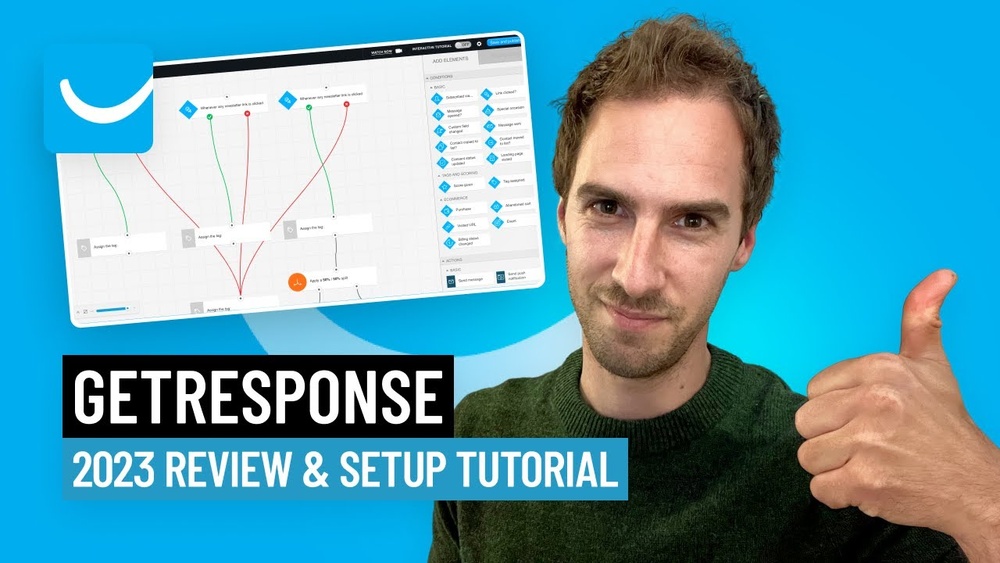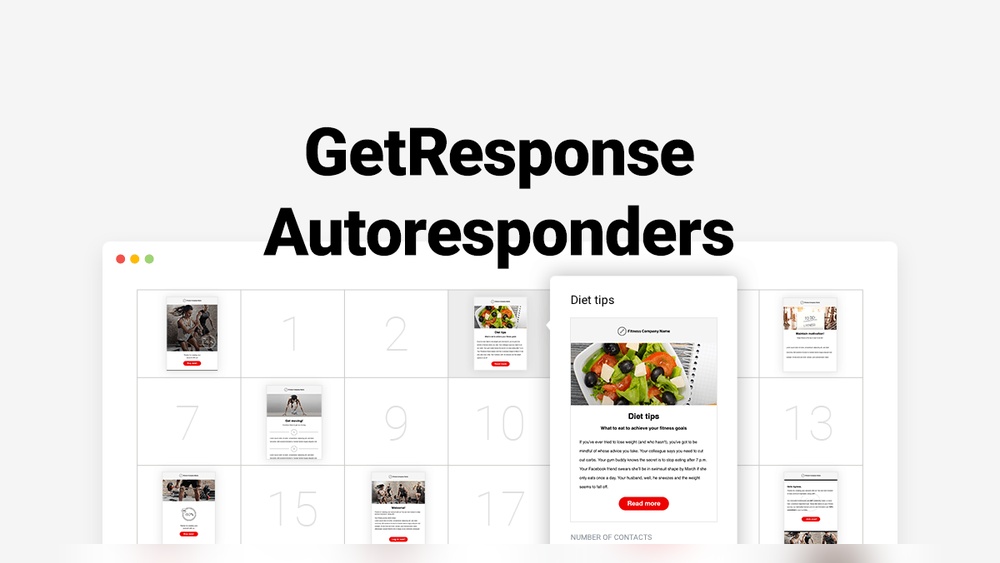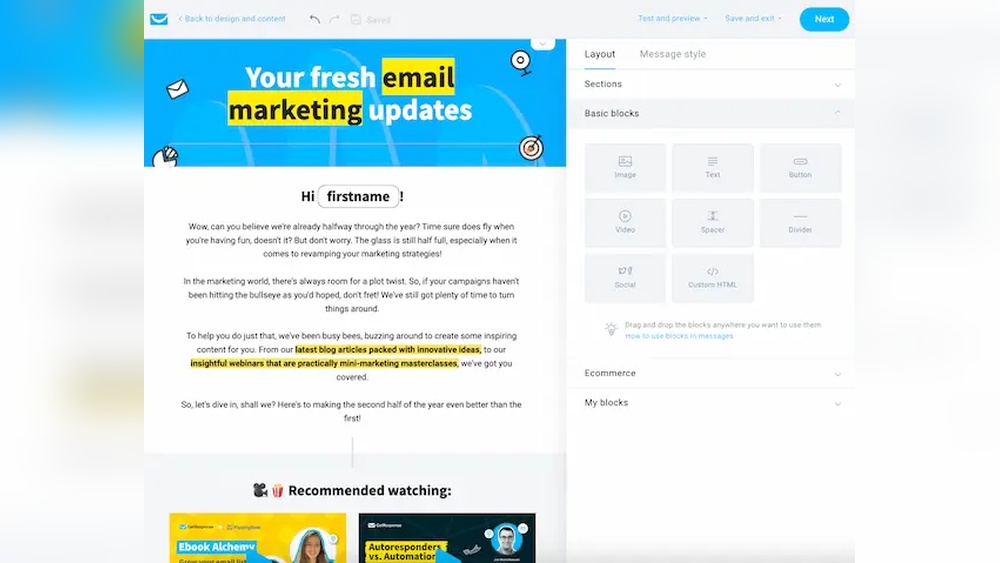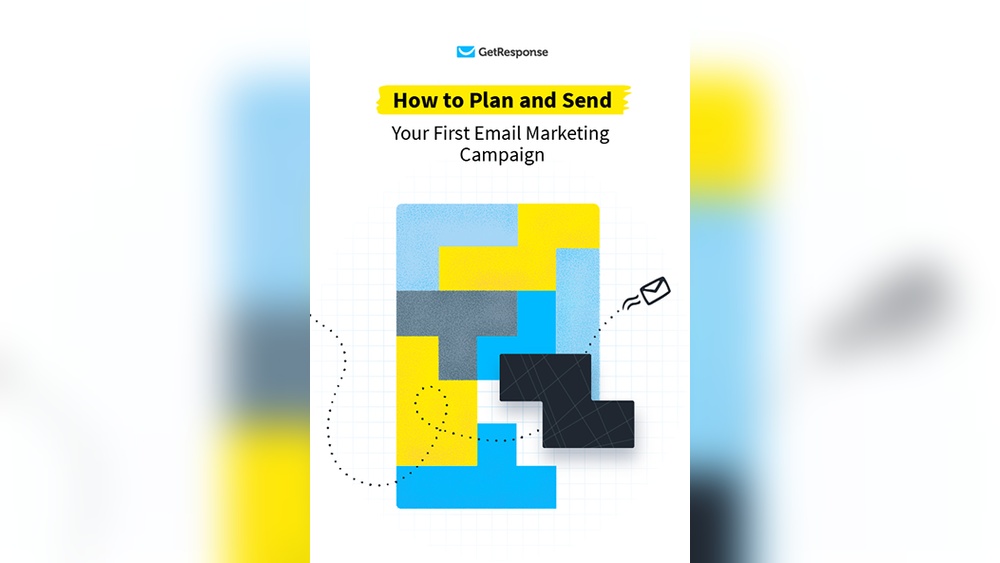Feeling overwhelmed about how to plan your email marketing strategy? You’re not alone.
With so many channels vying for attention, email remains a powerful tool to connect with your audience. But how do you ensure your emails stand out in a crowded inbox? The secret lies in crafting a strategy that’s both effective and engaging.
Imagine sending emails that not only get opened but also drive action. With the right approach, you can turn every message into an opportunity to build relationships and boost your business. This guide will show you how to plan an email marketing strategy that resonates with your audience and helps you achieve your goals. Ready to transform your email game? Let’s dive in and unlock the potential of your email marketing efforts.
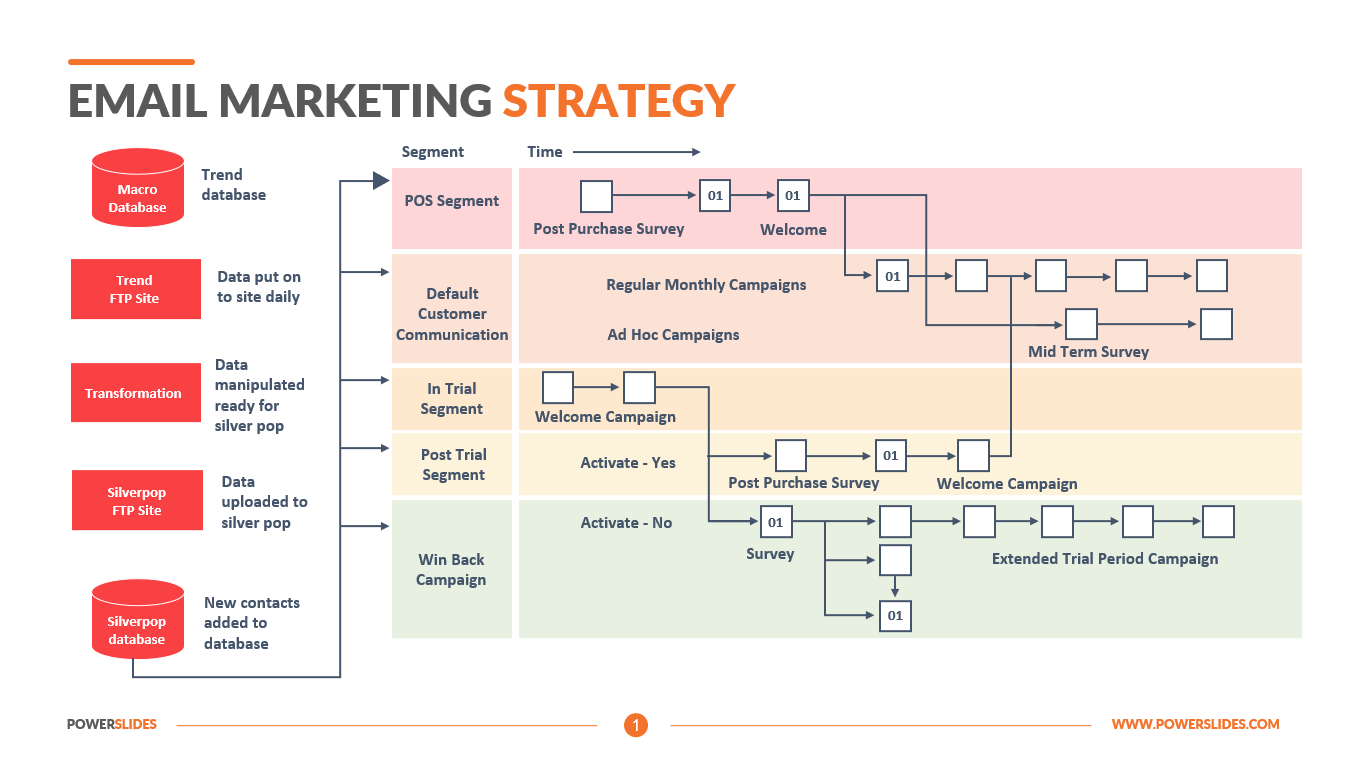
Credit: powerslides.com
Setting Goals
Planning an effective email marketing strategy starts with clear goals. Goals act as a roadmap, guiding your efforts and ensuring success. Without goals, your strategy may lack direction and focus.
Defining Objectives
Objectives provide a clear path for your email campaigns. Begin by identifying what you want to achieve. Is it increasing your subscriber list? Or boosting product sales? Establishing objectives helps in creating targeted content. This aligns with your overall business aims.
Consider your audience’s needs and preferences. Tailor your objectives to meet these needs. Clear, specific objectives make it easier to craft relevant and engaging emails. This enhances the effectiveness of your campaigns.
Measuring Success
To measure success, set measurable metrics. Metrics include open rates, click-through rates, and conversion rates. These indicators show how well your emails perform.
Analyze these metrics regularly. This helps in understanding what works and what doesn’t. Adjust your strategy based on these insights. Consistent monitoring ensures that your email marketing remains effective.
Setting realistic benchmarks is vital. Compare your results against these benchmarks to gauge progress. This enables you to refine your strategy for better outcomes.
Identifying Target Audience
Identifying the target audience is essential for an effective email marketing strategy. Focus on understanding their needs and preferences. This approach helps tailor messages, increasing engagement and conversion rates.
Identifying your target audience is the backbone of any successful email marketing strategy. Knowing who you are talking to helps you craft messages that resonate and engage. It’s like knowing your friend’s favorite coffee order—it shows you care and understand them. But how do you get to know your audience? Let’s explore ways to identify them by looking at demographic and behavioral insights.Demographic Analysis
Demographic analysis is about breaking down your audience based on age, gender, location, and more. It’s like creating a detailed profile for each segment of your audience. This information helps tailor your content to suit their preferences.Think about the last email you received that felt like it was written just for you. Chances are, the sender used demographic data to make it happen. You can use tools like Google Analytics to gather this data. What age group engages with your content the most? Do certain locations show higher interest in your products?When you know these details, you can send emails that speak directly to their needs and interests.Behavioral Insights
Behavioral insights reveal how your audience interacts with your content. They tell you what they like, what they ignore, and what makes them click. This data is gold for refining your email strategy.Consider tracking how users navigate your website. Do they spend time reading blog posts or dive straight into product pages? Are they clicking links in your emails or just opening them? Tools like heatmaps and click trackers can provide these insights.Remember the excitement when a friend surprises you with your favorite book? That’s the power of understanding behavior. When you know what your audience loves, you can deliver emails that delight and engage them.So, what’s stopping you from diving into these insights? Understanding your audience at this level can transform your email marketing efforts from ordinary to outstanding. Get to know them, and watch your engagement soar.Building Email List
Building a strong email list is the backbone of any email marketing strategy. It connects you with your audience directly. A well-curated list ensures your messages reach interested readers. This boosts engagement and conversions. Let’s explore two key aspects: opt-in strategies and segmenting subscribers.
Opt-in Strategies
Opt-in strategies are essential for growing your email list. They encourage users to subscribe willingly. Start with a simple sign-up form on your website. Keep it short and easy to fill. Offer incentives to attract more subscribers. Examples include discounts, free ebooks, or exclusive content. Use pop-ups sparingly to avoid annoying visitors. Ensure your opt-in process is mobile-friendly. Many users access emails via their phones. A smooth experience increases sign-ups.
Segmenting Subscribers
Segmenting subscribers means dividing your email list into smaller groups. Each group shares similar interests or behaviors. This allows you to send targeted emails. Personalized content boosts engagement rates. Start by segmenting based on demographics like age or location. Use data from past interactions to create segments. For instance, separate frequent buyers from occasional shoppers. Tailor your messages to fit each segment’s needs. This increases the chances of conversion. Regularly update your segments to keep them relevant.

Credit: powerslides.com
Crafting Content
Planning an email marketing strategy requires defining clear goals and understanding your audience’s needs. Create engaging content that resonates with subscribers. Schedule emails at optimal times to enhance open rates and conversions.
Crafting engaging content is essential for a successful email marketing strategy. It captures attention and encourages engagement. Knowing your audience’s needs is key. With this understanding, create content that resonates and provides value.Subject Lines
Subject lines are the first impression of your email. They must be compelling and concise. Aim to grab attention instantly. Use action words and create curiosity. Keep them under 50 characters. This ensures they display well on all devices. Experiment with questions. They can intrigue readers and prompt them to open the email.Personalization Techniques
Personalization makes emails feel unique. Address your subscribers by name. It creates a personal connection. Use data like past purchases or browsing history. Tailor the content to match their interests. This increases the likelihood of engagement. Dynamic content blocks can also enhance personalization. They allow for different content based on user preferences.Visual Elements
Visuals play a crucial role in email content. They break up text and add interest. Use images that align with your message. Ensure they are high quality and relevant. Infographics can be effective for presenting data. They make complex information easy to digest. Remember to optimize images for quick loading. Slow-loading emails can lead to high bounce rates.Timing And Frequency
Email marketing success hinges on timing and frequency. The right moment and rhythm can boost engagement. Sending emails at optimal times ensures higher open rates. Balancing frequency keeps your audience engaged without feeling overwhelmed.
Best Times To Send
Finding the best times to send emails is crucial. Studies show that specific days and times yield better results. Midweek days like Tuesday and Thursday are often ideal. Consider sending emails mid-morning or early afternoon. People are more likely to check emails during these times. Analyze your audience’s time zones for accurate timing. Test different times to see what works best for your subscribers.
Determining Send Frequency
Frequency affects how your audience perceives your emails. Too many emails can annoy subscribers. Too few may cause them to forget about you. Aim for a balanced approach that keeps your brand top of mind. Consider your industry and audience preferences. Weekly newsletters work well for some businesses. Others might benefit from bi-weekly or monthly sends. Regularly review engagement metrics to adjust your frequency strategy. Always prioritize quality content over quantity.

Credit: www.smartinsights.com
Automation And Tools
Planning an email marketing strategy involves selecting effective tools for automation. These tools help schedule emails, segment audiences, and track performance. Simple steps ensure messages reach the right people at the right time.
Automation and ToolsIn the world of email marketing, automation and tools are your best friends. They help you save time and ensure your messages reach the right people at the right time. Embracing these tools can transform your email marketing strategy from good to great.###Choosing Software
Selecting the right software is crucial. It’s like picking the right pair of shoes for a marathon. You want something that fits well, is comfortable, and enhances your performance. Look for software that offers a variety of features like segmentation, personalization, and analytics.Before making a decision, consider your business size and goals. Are you a small business looking for simplicity or a larger enterprise in need of advanced features? Platforms like Mailchimp, HubSpot, and ConvertKit cater to different needs. Read reviews and perhaps try a free trial to see if it fits your requirements.###Creating Automated Workflows
Once your software is in place, it’s time to create automated workflows. These workflows act as your silent assistants, sending out emails based on triggers like user behavior or time intervals. This ensures your subscribers receive timely and relevant content without you lifting a finger each time.Think of a welcome email series. When someone signs up, they automatically receive a series of emails that introduce them to your brand. You can also set up cart abandonment emails to remind users of items left in their shopping carts. These workflows increase engagement and can drive sales without any extra manual effort.Are you using automation to its fullest potential? It’s not just about saving time but enhancing customer experience. By setting up smart workflows, you can nurture leads and build stronger relationships with your audience.Automation and tools are not just optional extras in email marketing. They are essential components that can significantly elevate your strategy. As you plan your email marketing, consider how automation can streamline your processes and enhance your results.Testing And Optimization
Testing and optimization are vital in creating a successful email marketing strategy. They ensure your emails engage and resonate with your audience. By testing different elements, you can refine your approach. Optimization helps you improve your email performance over time.
A/b Testing
A/B testing is a simple way to understand what works best. Create two versions of an email with one difference. This could be the subject line, image, or call-to-action. Send each version to a small segment of your audience. Measure which version performs better. Use the winning version for the rest of your audience. This method helps you make informed decisions based on real data.
Analyzing Metrics
Metrics provide insights into how your emails perform. Key metrics include open rate, click-through rate, and conversion rate. Open rate shows how many recipients opened your email. Click-through rate tells you how many clicked on links. Conversion rate reveals how many completed a desired action. Regularly analyze these metrics to identify trends and areas for improvement. Adjust your strategy based on this data.
Compliance And Best Practices
Crafting an email marketing plan requires attention to compliance and best practices. Focus on understanding your audience and creating engaging, relevant content. Ensure emails are compliant with regulations and respect privacy to build trust and enhance effectiveness.
Email marketing is an amazing tool that can boost your business’s growth, but it comes with its own set of rules. Navigating these rules is crucial to ensure your emails land in inboxes and not spam folders. This section will guide you through the maze of compliance and best practices, helping you maintain a positive relationship with your subscribers.###Understanding Regulations
Email marketing is governed by laws like the CAN-SPAM Act in the U.S. and GDPR in Europe. These regulations are designed to protect consumers and ensure ethical marketing practices.You need to be aware of these laws and adhere to them strictly. They set rules about how you collect, store, and use email addresses. Ignoring them can lead to hefty fines and damage to your brand’s reputation.A practical tip is to always get explicit permission from subscribers before sending them emails. Opt-in forms are your best friends here. They ensure compliance and set the stage for a trusting relationship.###Maintaining Trust
Trust is the backbone of email marketing. Subscribers need to feel confident that their data is safe with you. Transparency in how you handle their information is key.Always provide a clear option to unsubscribe in every email. This builds trust and shows respect for your subscriber’s choices. If you make it difficult to unsubscribe, they might report your emails as spam.Another way to maintain trust is to send relevant content. Are your emails adding value to your subscribers’ lives? If not, they might just ignore them or unsubscribe.Personal stories can illustrate this point. I once subscribed to a newsletter that sent irrelevant content week after week. Eventually, I unsubscribed. The lesson? Know your audience and cater to their interests.How do you ensure your emails are trustworthy and compliant? Reflect on your current practices and make necessary changes. Your subscribers will thank you with their loyalty.Future Trends
Planning an email marketing strategy involves understanding future trends to stay ahead. Personalization and automation are key elements. Focus on mobile-friendly designs and interactive content. Engaging subject lines and clear calls-to-action drive results. Regularly analyzing metrics helps refine strategies for better performance.
Planning an email marketing strategy requires foresight into future trends. As the digital landscape evolves, staying ahead of the curve is crucial. Embracing emerging trends can transform your email campaigns from mediocre to exceptional.Ai In Email Marketing
AI is no longer just a futuristic concept; it’s a reality shaping how we communicate. Imagine sending emails that adjust their content based on each recipient’s behavior. AI can help you do this by analyzing data and predicting what your audience wants to see.Have you ever noticed an email offering a discount on a product you were just browsing? That’s AI in action, tailoring messages to match interests and increase engagement. Integrating AI tools into your strategy can save time and boost results, leading to more personalized and effective campaigns.Interactive Email Design
Static emails are becoming a thing of the past. Today, people expect more engaging experiences, even in their inboxes. Interactive email design allows you to add elements like quizzes, polls, and videos directly into your emails.Consider using a carousel to showcase multiple products within a single email. Or include a survey to gather feedback and make your audience feel heard. Interactive features not only capture attention but also enhance user experience, making your emails more memorable.Are you ready to take your email marketing to the next level? By adopting these trends, you can create impactful campaigns that resonate with your audience. What trend will you try first?Frequently Asked Questions
How To Create An Email Marketing Strategy?
Define goals and audience, choose an email platform, create engaging content, segment your list, and analyze results.
What Is The 80/20 Rule In Email Marketing?
The 80/20 rule in email marketing suggests focusing 80% of efforts on engaging content and 20% on promotion. This strategy helps build trust and encourages customer interaction, leading to higher conversion rates. Prioritize valuable information to maintain subscriber interest and drive results.
What Are The 5 T’s Of Email Marketing?
The 5 T’s of email marketing are Targeting, Timing, Testing, Tracking, and Trust. Target the right audience. Send emails at optimal times. Continuously test strategies. Track performance metrics. Build trust with subscribers.
Conclusion
Creating an effective email marketing strategy is crucial. Start with clear goals. Understand your audience well. Craft compelling subject lines. Personalize your content. Use a consistent schedule. Test different approaches. Analyze your results regularly. Improve based on feedback and data.
Good planning leads to success. Engage your audience with useful content. Keep messages concise and relevant. Remember, communication is key. Build trust through regular, valuable emails. Stay committed to your strategy. Your efforts will pay off. Happy emailing!

